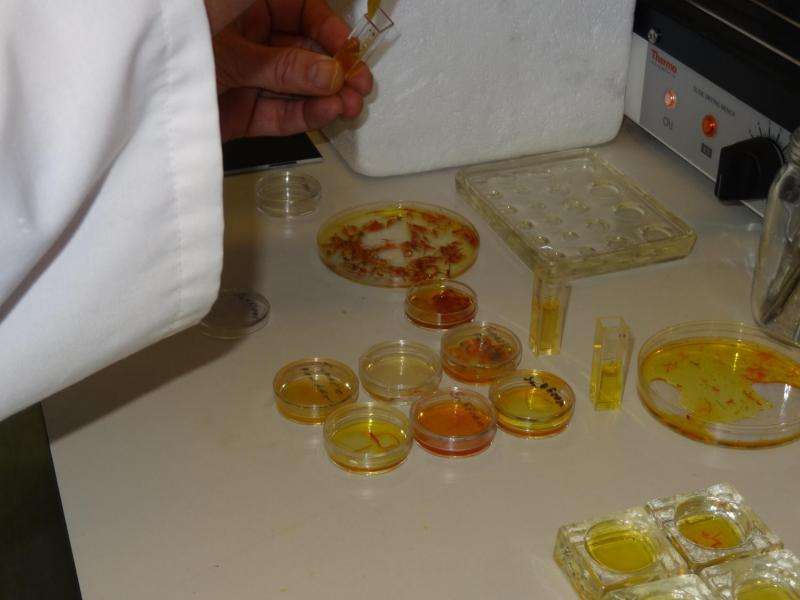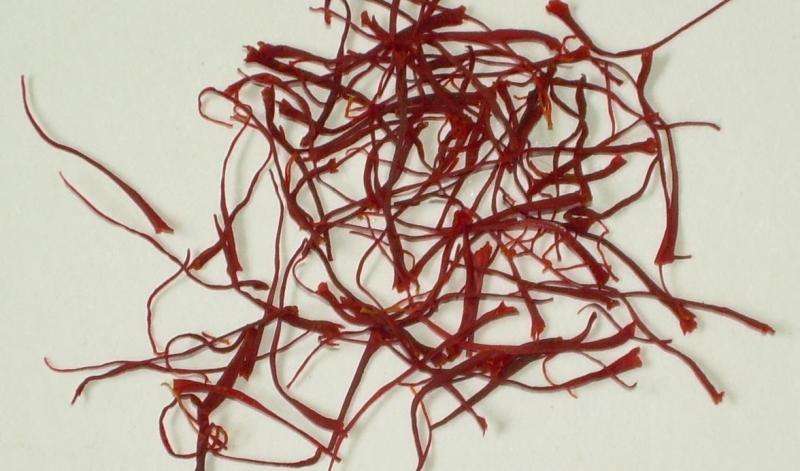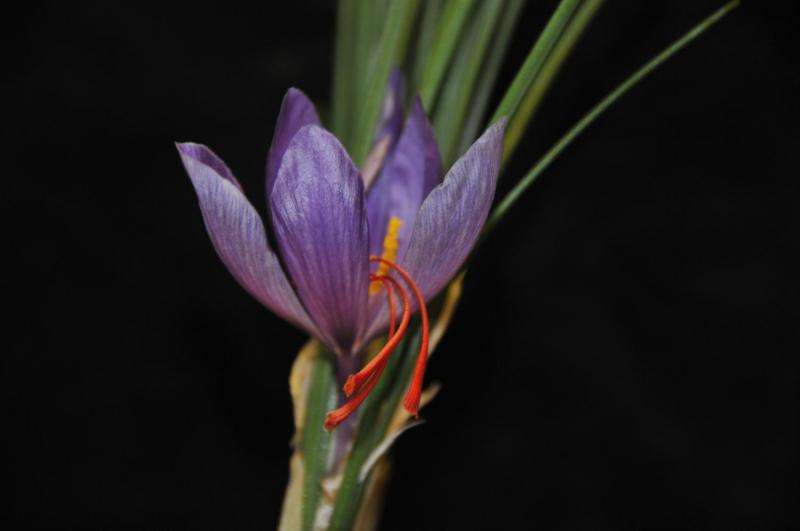Saffron – how to tell the real deal from a fake

Professor Pat Heslop-Harrison from the University of Leicester Department of Genetics has outlined some of the key ways to tell real saffron from fake, with the real deal providing a unique experience for the senses.
In an article for Think: Leicester, the University's platform for academic opinion, Professor Heslop-Harrison suggests that one of the key ways to tell real saffron from a fake is its distinct smell – while fake saffron will have almost no aroma, the smallest amount of genuine saffron will have a characteristic smell.
Real saffron will also have a bitter and slightly astringent taste when placed on the tongue.
Genuine saffron also has a particular look about it, with a unique coloration and strands of saffron having a diffuse end.
Three different compounds, safranal, crocin and picrocrocin, give the aroma, colour and taste respectively in saffron, and each is measured separately when checking if saffron is genuine.
Saffron is part of the flower of an autumn-flowering crocus - the orange female part or the stigmas which collect the pollen. About 100,000 saffron flowers are required to collect 1kg of saffron spice, so costly to produce.
Saffron is the most expensive agricultural product in the world - around £5 to £10 per gram, the price of 20 kg of wheat flour at the same supermarket.

Professor Heslop-Harrison said: "Producers from each country are rightly proud of their own saffron, and there are differences in colour and flavour which depend on where the plant is grown – altitude (3000m in Kashmir, sea-level in Iran), soil, temperature and seasonality of rainfall – and in how it is collected, separated from other plant parts, and then dried after collections.
"Being fortunate in having collaborators working with saffron from throughout the world, I use the saffron from the country of the dish I am making. The local cooks have chosen their foods to complement the special saffron of their farmers: Spanish saffron for paella, Greek for sweets and drinks, Kashmiri for curry."

Provided by University of Leicester



















